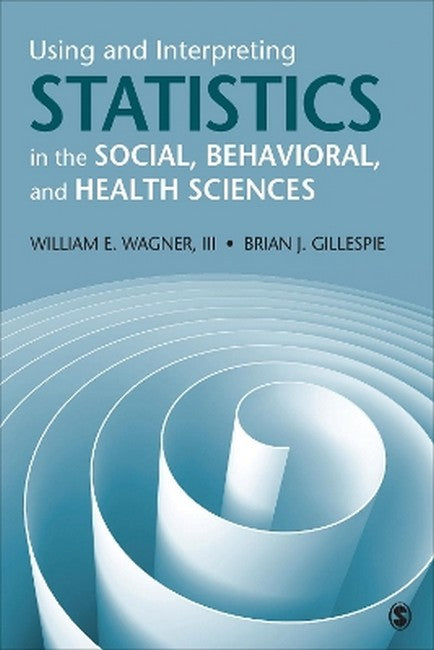William E. Wagner, III, PhD, is Chair of the Department of Sociology at California State University, Dominguez Hills and Executive Director of the Social Science Research & Instructional Council of the CSU. He is co-author of Adventures in Social Research, 11th edition (SAGE, 2022), The Practice of Survey Research (SAGE, 2016), and A Guide to R for Social and Behavioral Sciences (SAGE, 2020) and author of Using IBM (R) SPSS (R) Statistics for Research Methods and Social Science Statistics, 7th edition (SAGE, 2019). Brian Joseph Gillespie, Ph.D. is a researcher in the Faculty of Spatial Sciences at the University of Groningen in the Netherlands. He is the author of Household Mobility in America: Patterns, Processes, and Outcomes (Palgrave, 2017) and coauthor of The Practice of Survey Research: Theory and Applications (Sage, 2016) and Using and Interpreting Statistics in the Social, Behavioral, and Health Sciences (Sage, 2018). He has also published research in a variety of social science journals on topics related to family, migration, the life course, and interpersonal relationships.
Request Academic Copy
Please copy the ISBN for submitting review copy form
Description
Acknowledgments Chapter 1: Brief Introduction to Research in the Social, Behavioral, and Health Sciences What Is the Purpose of Research? How Is Research Done? Scientific Method and Hypothesis Testing Inductive Research Deductive Research Research Designs Chapter 2: Variables and Measurement Variables and Data Levels of Variable Measurement Types of Relationships Research Design and Measurement Quality Chapter 3: How to Sample and Collect Data for Analysis Why Use a Sample? Probability Sampling Methods Nonprobability Sampling Methods Validating a Sample Split Ballot Designs How and Where Are Data Collected Today? Chapter 4: Data Frequencies and Distributions Univariate Frequencies and Relative Frequencies Cumulative Percentages and Percentiles Frequencies for Quantitative Data Univariate Distributions The Normal Distribution Non-Normal Distribution Characteristics Data Transformations for Dealing With Non-Normal Distributions Bivariate Frequencies Chapter 5: Using and Interpreting Univariate and Bivariate Visualizations Univariate Data Visualization Bivariate Data Visualization Chapter 6: Central Tendency and Variability Understanding How to Calculate and Interpret Measures of Central Tendency Understanding How Individuals in a Distribution Vary Around a Central Tendency Chapter 7: What Are z Scores, and Why Are They Important? What Is a z Score? How to Calculate a z Score The Standard Normal Table Working With the Standard Normal Distribution to Calculate z Scores, Raw Scores, and Percentiles Confidence Intervals Chapter 8: Hypothesis Testing and Statistical Significance Null and Alternative Hypotheses Statistical Significance Test Statistic Distributions Choosing a Test of Statistical Significance The Chi-Square Test of Independence The Independent Samples t Test One-Way Analysis of Variance Chapter 9: How to Measure the Relationship Between Nominal and Ordinal Variables Choosing the Correct Measure of Association Trying to Reduce Error (PRE Statistics) Calculating and Interpreting Lambda Calculating and Interpreting Gamma Calculating and Interpreting Somers' d Calculating and Interpreting Kendall's Tau-b Interpreting PRE Statistics Overview Chapter 10: Effect Size Effect Size Choosing an Effect Size Chapter 11: How to Interpret and Report Regression Results What Is a Regression? Correlation Bivariate Regression Coefficient of Determination (r2) Multiple Regression Logistic Regression Chapter 12: Indices, Typologies, and Scales Indices, Typologies, and Scales Defined and Explained Appendix A. The Standard Normal Table Appendix B. Critical Values for t Statistic Appendix C. Critical Values for Chi-Square Appendix D. Critical Values for F Statistic Appendix E. Glossary About the Authors

